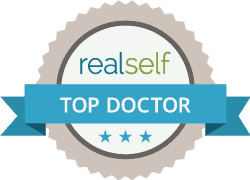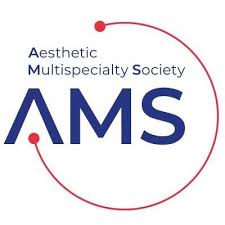 A laser facial treatment can significantly improve several skin concerns and signs of aging like wrinkles, fine lines, or uneven skin tone. However, a majority of laser treatments will also require some downtime and specialized skin care to encourage healthy and smooth healing. Dr. Chetty will give you specific advice and instructions after your treatment, but below are some general guidelines to follow.
A laser facial treatment can significantly improve several skin concerns and signs of aging like wrinkles, fine lines, or uneven skin tone. However, a majority of laser treatments will also require some downtime and specialized skin care to encourage healthy and smooth healing. Dr. Chetty will give you specific advice and instructions after your treatment, but below are some general guidelines to follow.
Gently Cleanse Your Skin Regularly
Keeping the skin clean is an important way to avoid infection and encourage proper healing after a laser treatment. However, you should avoid harsh cleansers or soaps as much as possible to prevent unnecessary irritation to the treated skin. Dr. Chetty will likely recommend gently cleansing the skin between two to five times per day after your laser treatment. Instructions will vary depending on the specific laser service you receive and your skin type, so be sure to follow Dr. Chetty’s advice carefully after your treatment.
Apply SPF
After a laser treatment, your skin will be photosensitive, meaning that SPF is even more important than ever. Excess sun exposure could cause poor results as you heal from a laser treatment, including scarring and hyperpigmentation. For this reason, you should avoid direct sun exposure as much as possible. If you must be outdoors, try to stick to the shade or wear a wide-brimmed hat in addition to appropriate SPF. Before your laser treatment, Dr. Chetty will explain specific directions or recommend SPF products you can use following your procedure.
Moisturize Your Skin
After a laser treatment, it is normal for the skin to appear dry, flaky, or crusty. Moisturizing the skin is important to encourage proper healing and prevent infection. After ablative laser treatments, which resurface the skin, you will need to take added precautions to keep the skin moisturized and protected like applying heavier ointments or creams. Dr. Chetty may recommend a thicker moisturizer or a similar ointment to create a protective barrier over the healing skin. As healing progresses, you can switch to a lighter moisturizer. In addition to applying moisturizing products, you should be sure to stay hydrated. Drinking adequate amounts of water will help support healthier skin as you heal.
Reduce Swelling and Redness
Swelling and redness are both normal side effects of laser treatments. This is especially true for more intense laser treatments like ablative procedures. To soothe swelling and redness, you can apply ice packs or cold compresses to the skin as you relax and heal. This will help reduce inflammation within the skin. Additionally, it’s best to keep your head elevated to relieve swelling. Stay in an upright position through the day and sleep with your head propped up as much as possible. Following these steps will help alleviate swelling and redness quickly so you can return to your normal routine sooner.
Prioritize Rest and Rejuvenation
After most laser treatments, the surface layer of the skin will peel off to reveal refreshed and rejuvenated skin. Most patients would rather avoid social interactions as their skin heals, and pollution or stress can both irritate the skin through this process. For this reason, you should prioritize rest and relaxation as your skin heals. Dr. Chetty will explain the amount of downtime you can expect from the customized laser treatment during your consultation.
Avoid Strong Active Ingredients and Treatments
Strong, active ingredients such as retinol can be a great option for many people, especially as you treat signs of aging. However, these ingredients are too harsh for healing skin after a laser treatment. Skip these steps of your skincare routine to give your skin a break as you recover from a laser treatment. Our team of skincare specialists can give you tailored advice on which products to incorporate into your post-laser treatment routine and when you can resume using your favourite stronger products.
Similarly, you should pause at-home treatments that can irritate the skin both before and after your laser service. This includes tweezing, waxing, or chemical epilation of the skin, which you should avoid for at least three weeks before and after your treatment. Do not use at-home microneedling or exfoliating tools and avoid picking or scrubbing your skin.
Wait to Apply Makeup
Side effects like peeling, redness, swelling, or crusting make it tempting to apply makeup to hide the skin until it is completely healed. However, this can be irritating to the skin. In the worst case, using old products or unsanitary tools could also cause an infection. It’s best to wait up to a few weeks until the skin has fully healed before applying makeup. If you must, new mineral makeup applied with single-use or thoroughly cleansed brushes can be a safer option. Be sure to consult with Dr. Chetty before applying makeup to prevent any unnecessary irritation or other poor results.
Your Laser Facial Treatment Results
As you follow these steps, you will begin to see the results of your laser facial emerge. Through various laser treatments, you can achieve smoother and more even skin, addressing issues like fine lines, wrinkles, acne scars, sunspots or age spots, and overall uneven skin tone.
There are various types of laser treatments used for different patient needs. Ablative laser treatments will completely resurface the skin, removing the outermost layer so that new, refreshed, and healthy skin can be revealed. Non-ablative treatments will address localized areas and resurface the skin with less invasive techniques. Fractional lasers are a type of ablative laser which creates tiny holes or columns within the skin to stimulate new collagen production. As you might imagine, these varying treatments will result in varying downtimes. Before your laser treatment begins, Dr. Chetty can explain your expectations in detail.
Schedule an Appointment
To learn more about laser facial treatments, schedule a consultation with Dr. Chetty at Cerulean Medical Institute. Call our Kelowna, BC office at (778) 402-3696 or contact us online.






















